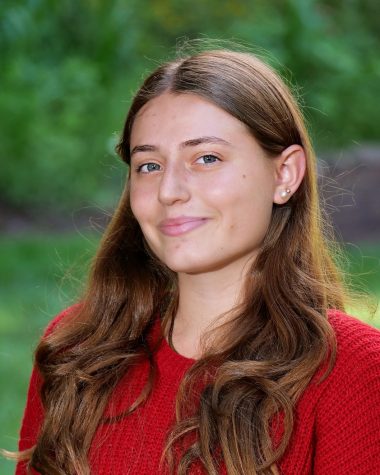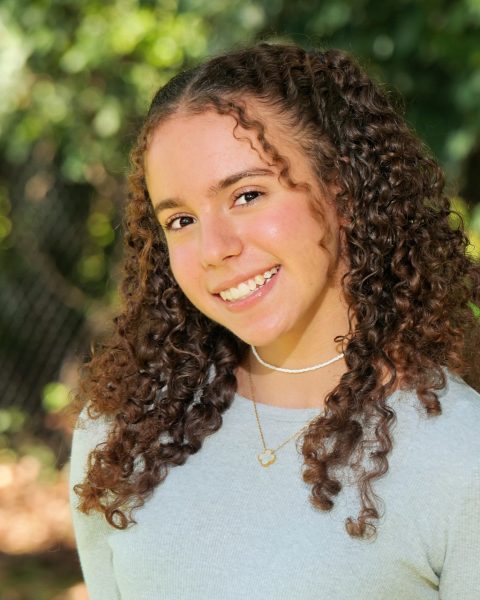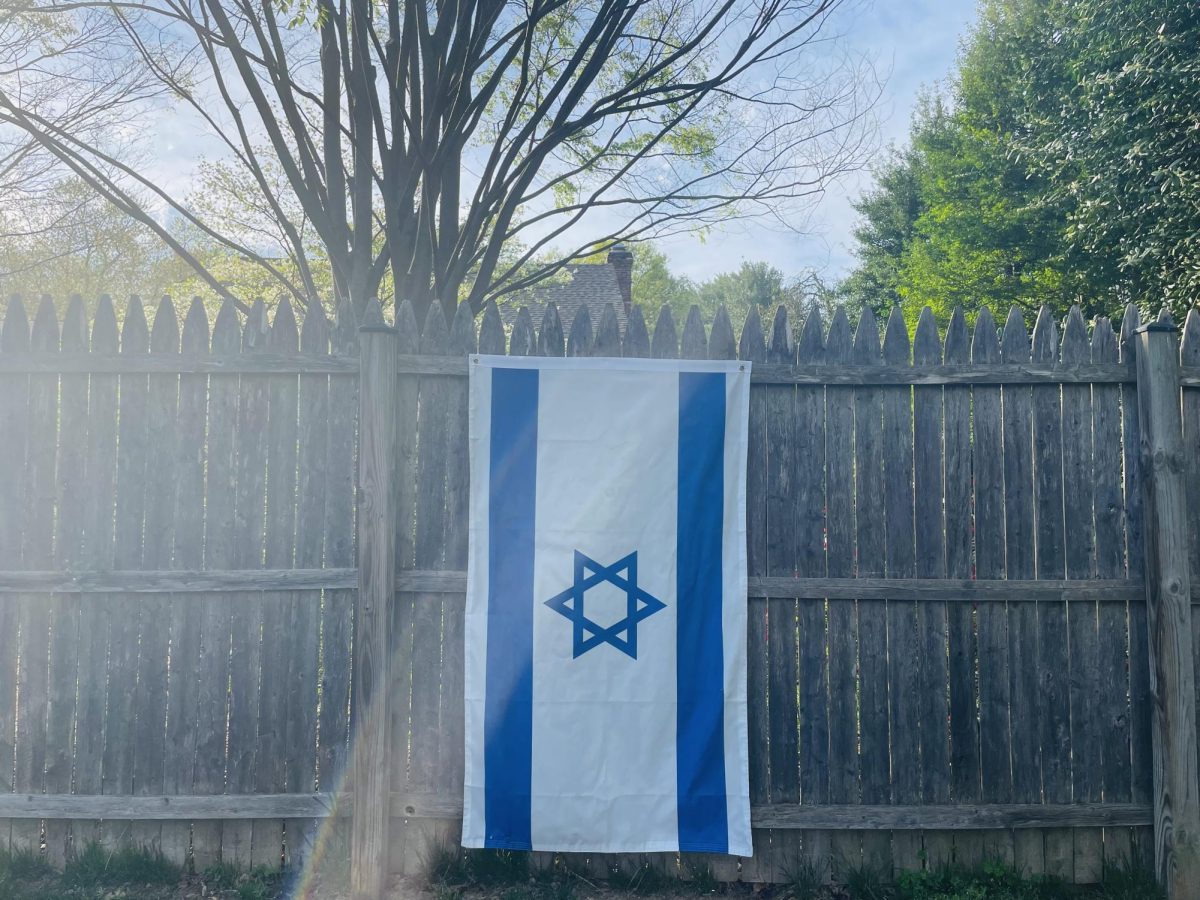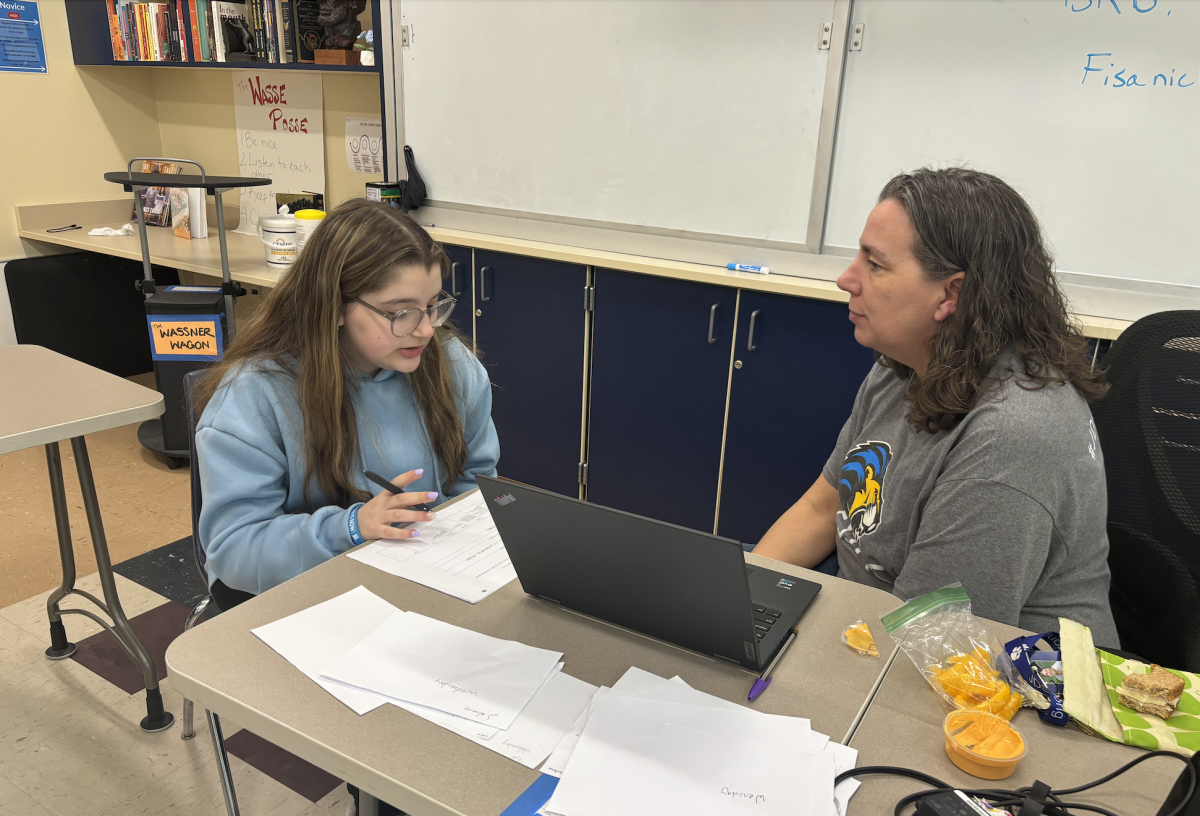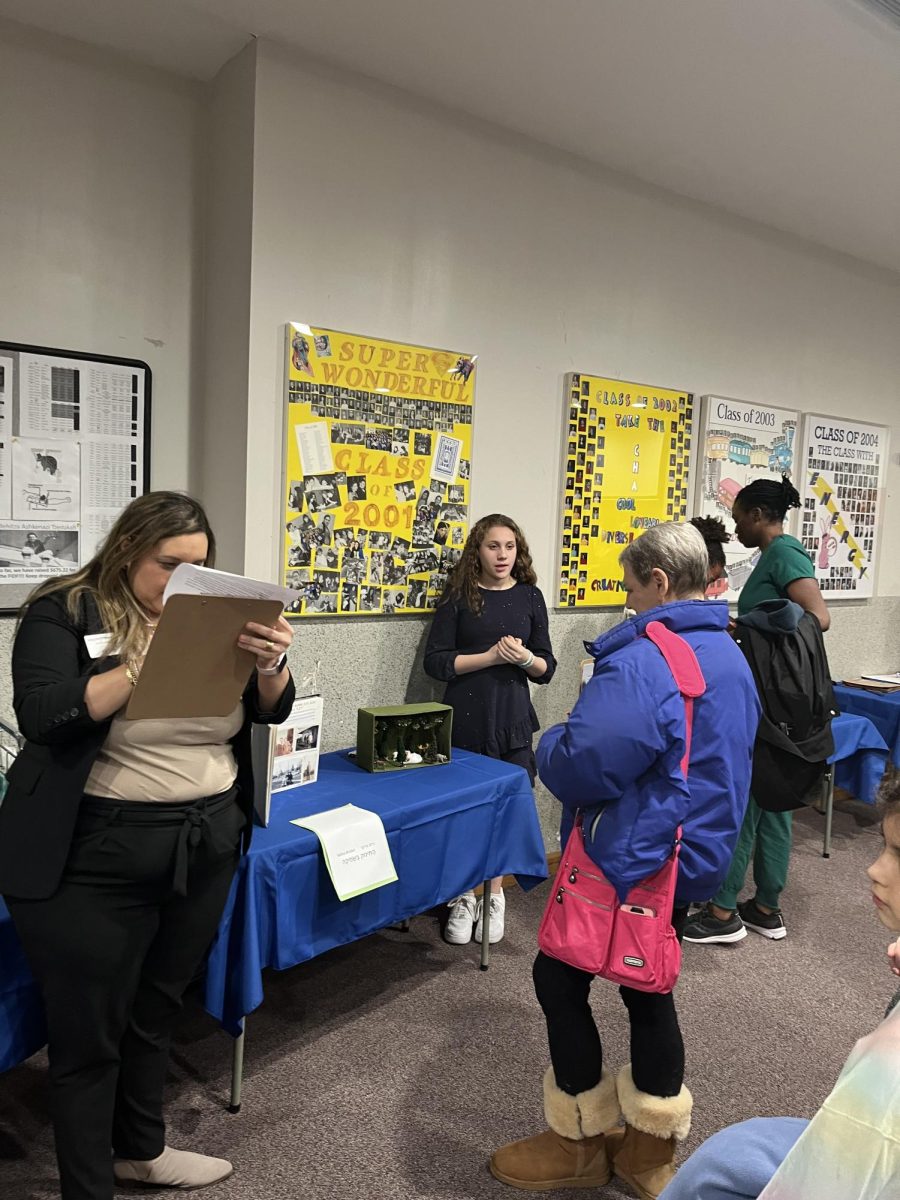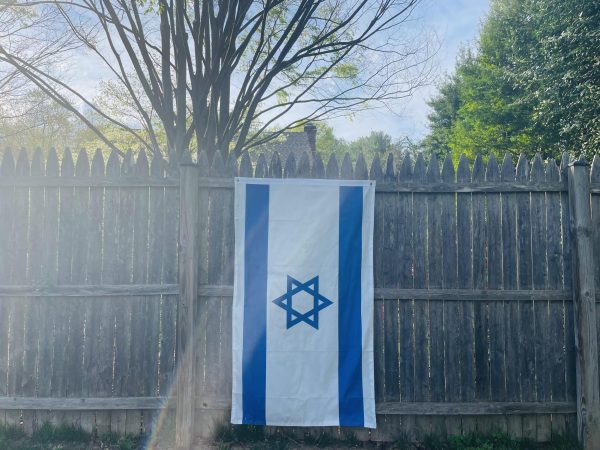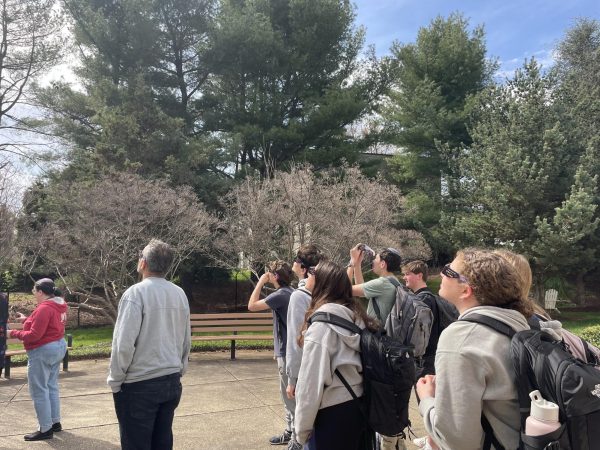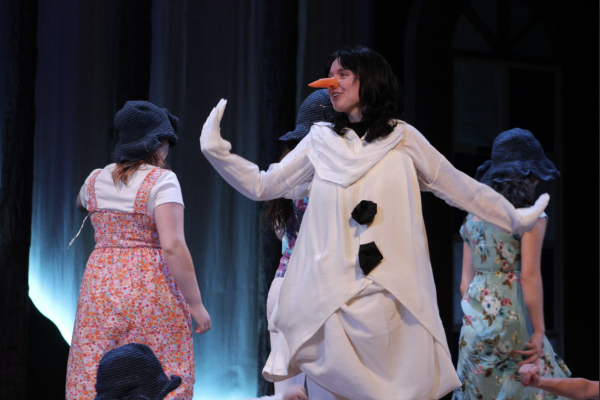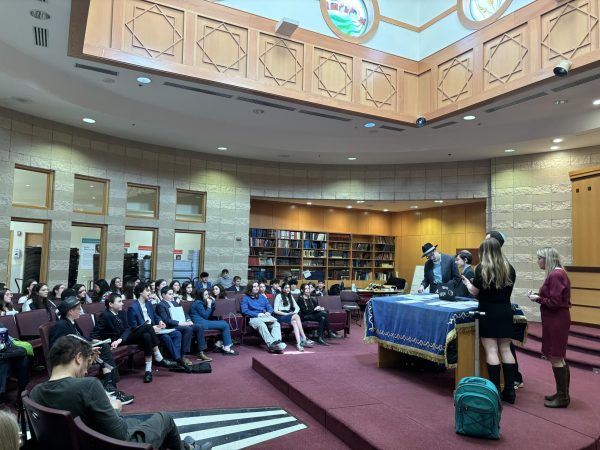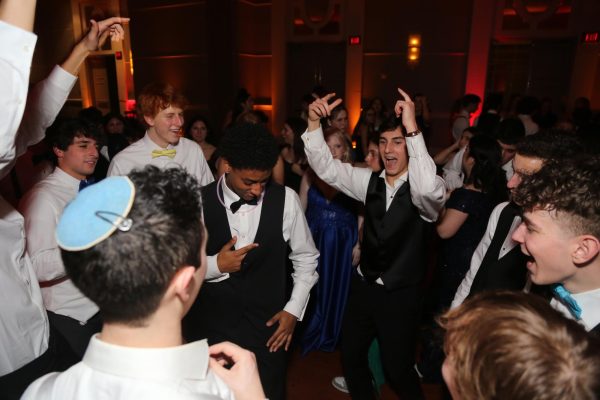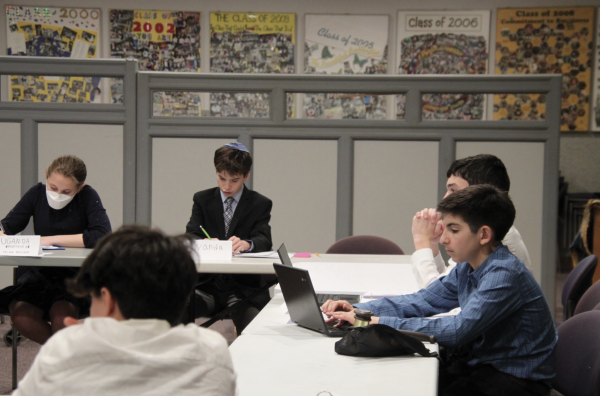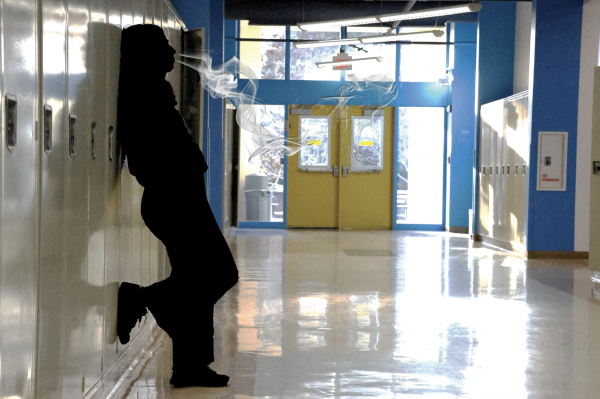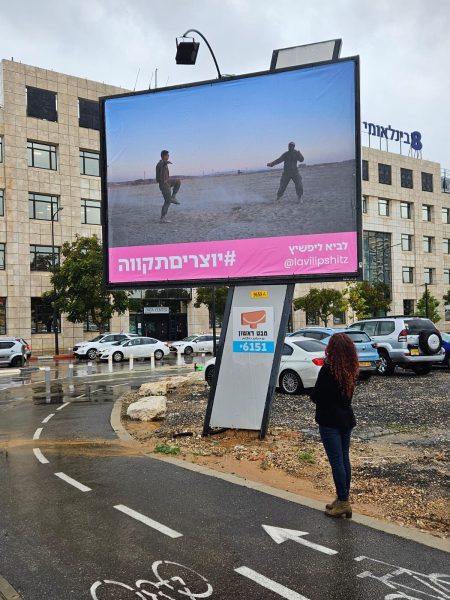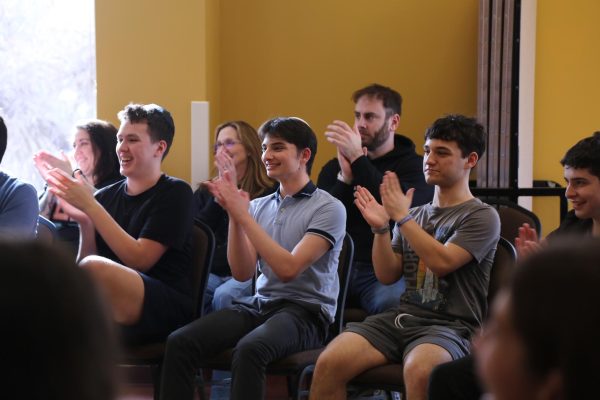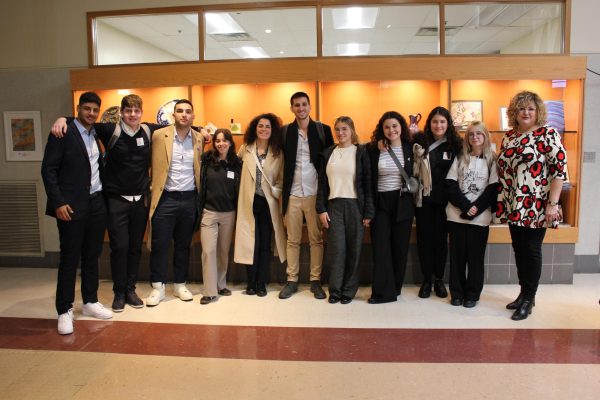JDS students visit the Smithsonian National Museum of the American Indian
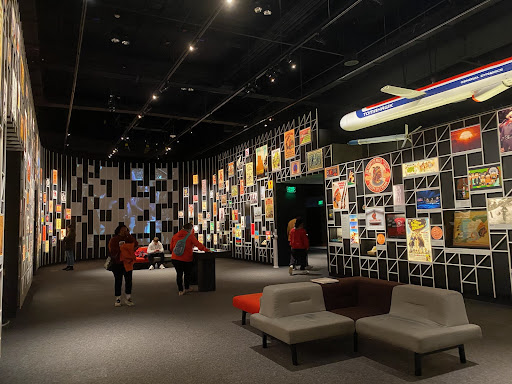
Students explore the museum, stopping to look at exhibits and read the many descriptions. This room visually depicts the positive and negative ways Native Americans have been viewed by Americans throughout history.
March 23, 2023
Students who are taking CESJDS’s brand new elective offering, History of Indigenous Americans, had a chance to visit the Smithsonian National Museum of the American Indian last Tuesday on March 14. Students in this class have the opportunity to learn about Native American culture and also about their treatment by the United States.
Immediately upon entering the museum, one of the most notable aspects is the physical design of the building. One member of the class, sophomore Nate Szubin, said that he found the architecture quite interesting. The building’s distinctive curvilinear form, initially designed by Native American architect Douglas Cardinal, evokes a wind-sculpted rock formation theme that is present throughout the whole museum.
Although this is the first year the class is a course offering, History Department Chair Mark Buckey developed the course concept 12 to 15 years ago. However, Buckley said that the class “proved too difficult to put together because the resources were not out there.”
Buckley said that his goal when adding a new elective was to develop material that provides students with a new lens about a topic that history classes do not always approach. After Buckley spoke with members of the history club, history teacher Matt Cohen and Buckley gathered that the history of Native Americans was one of the courses that students were interested in and one that they were interested in writing.
Buckley said that considering pluralism as one of the key values at JDS, this course is an especially great way to explore that lens of history.
“I think it’s important not just at JDS but anywhere in the sense that Native American history is not one that really gets a lot of focus on the broader scope of American history,” Buckley said. “There certainly needs to be a much sharper lens as to the contributions and through the continuing roles that Native Americans play in American history.”
To properly convey that message, Buckley said that the National Museum of the American Indian is a great way to connect what the class has been learning with the exhibits in the museum. For example, Buckley said that the class is currently learning about the relationship between Native Americans and the U.S. government. Visiting the museum and being able to explore an exhibit that focuses on that is extremely helpful for the students taking the course.
Another key reason for visiting the museum was the ability to see important artifacts that connected with what the students are learning in the class. Buckley said being able to learn history through text-based documents helps students better understand the material.
Szubin thought being able to see physical treaties about what he was learning about in class helped him understand their significance.
Another member of the class, sophomore Rafi Siegal, appreciated the chance to view clippings from U.S. newspapers that featured major wars between Native Americans and the United States.
Siegal said he was able to form a connection between the exhibits in the museum and what he was learning in the class. He also said that he appreciated the chance to learn about a subject differently than he has with other topics.
“It’s really cool to learn in a very different way than we are used to learning in history classes and a subject that in history classes in general they haven’t spent such a long time learning about,” Siegal said.
Buckley has always viewed the history of Native Americans as imperative to understanding American history as a whole. He hopes he can continue to teach this important part of history in the future.
“I hope more students want to take it in the future so we can keep it going,” Buckley said.


